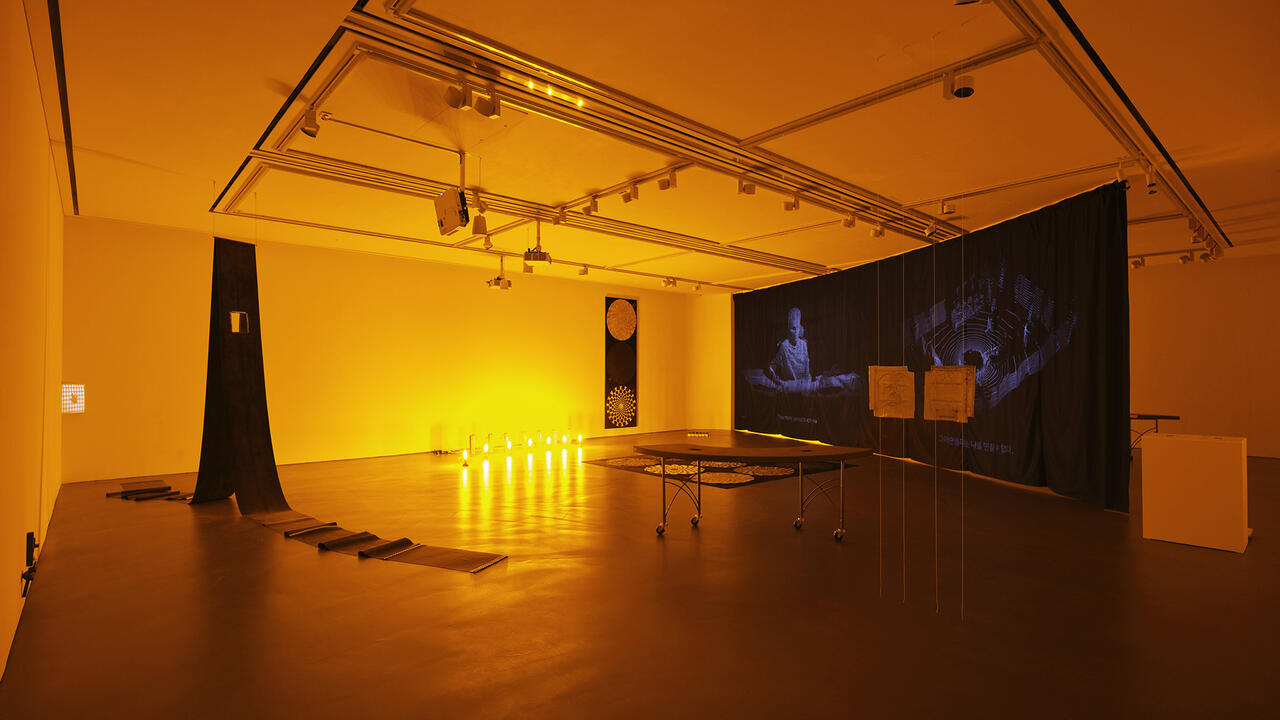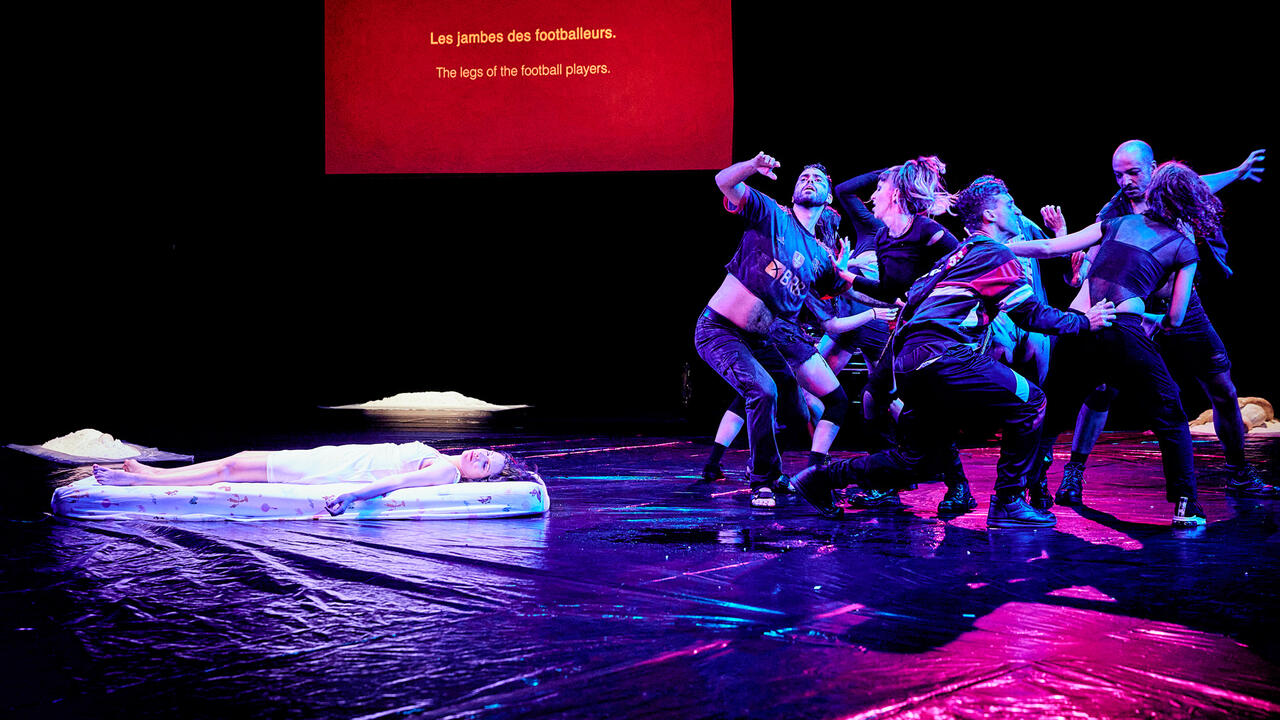Declinación Magnética

The exhibitions ‘Altermodern’ (2009) at Tate Britain in London and ‘Modernologies: Contemporary Artists Researching Modernity’ (2009–10) at Museu d’Art Contemporani de Barcelona (MACBA) both approached modernity as equivocal and unresolved. Curators Nicolas Bourriaud and Sabine Breitwieser respectively proposed our current state of suspense as a consequence of self-doubt, while also reaffirming Europe as the main site of production. However, Peruvian philosopher Anibal Quijano pointed out in his 1991 essay ‘Coloniality and Modernity/Rationality’ that modernity is essentially ambiguous because of its ‘invisible side’ – what he termed ‘coloniality’ – which is so often swept to the margins of history books.
The Barcelona-based collective of curators and artists Declinación Magnética (Magnetic Declination) explore these unseen histories in ‘Margin of Error’, an exhibition of six films made in collaboration with teenagers and history teachers. In Textbooks (2013), the teenage participants are shown customizing 20th-century textbooks from Spain and its former Latin American colonies. Displayed in the gallery space, these scribbled-on, cut-up and blacked-out texts trace the objectives of the project: to not only explore the history book, the classroom and traditional teaching techniques as technologies of modernity/coloniality but to intervene creatively in the process through which a representation comes to be absorbed and accepted by an individual.
In the film Chance (2013), a spinning top loses its balance and rests on its side where the word ‘invasion’ has been printed. In an open studio the schoolteachers, teenagers and other collaborators take their cue and begin a discussion of the use of the word throughout the gathered textbooks. The camera returns to the spinning top, which falls this time on its underside, guiding the conversation towards a comparison between Spanish textbooks’ common deployment of the word ‘discovery’ and the more critical representations found in those from the Latin American countries. In a displacement of the traditional classroom technique of memorization, the same characters are shown struggling to recite the textbook’s ISBN numbers or studying the publishers’ addresses (Memory I, 2013).
In Tableau Vivant (2013), the teens act out key moments from Spain’s colonial past, freezing like statues to represent ‘encounter’, ‘arrival’ or ‘conquest’. Every moment of hesitation is a frieze of sorts: history visualized as an awkward, amateur rehearsal. Through strategies of parody and re-performance, Declinación Magnética hold the varying representations of colonial violence and its axes of resistance in a state of suspense.
But is the suspense and hesitation characteristic of a post-modern critique of totality limited to the history of Europe and European ideas? While Declinación Magnética position themselves as developing post- and de-colonial methodologies for discursive intervention in Spain, their decision to reiterate the centrality of European historiography and repeat its own accounts of sovereignty reveals the deep contradictions at the heart of the project. As Boris Groys writes in The Post-Communist Condition (2004), the difficulty of imagining other post-national modes of sociality has served to naturalize nation states to the point of converting them into the ‘real protagonists of history’. As the teenagers in Tableau Vivant pace in a circle, pausing to perform Spain’s origin stories, is it not the nation state that remains at the centre – repeated out of context, a ghost, a negation, but nevertheless present as the ‘real protagonist’?
A blacked-out textbook, a conversation chaired by a spinning top, absurd memory games and performing the colonial frieze: Declinación Magnética’s creative and collaborative methodologies reflect a constant movement between performance and rehearsal, between memory as script and script as contingency, between the discursive positions made available by dominant European historiography and the off-space, the elsewhere, the margins. It is here, as hesitation gives way to micro-movement, that alternative protagonists emerge – practically undetectable.

















